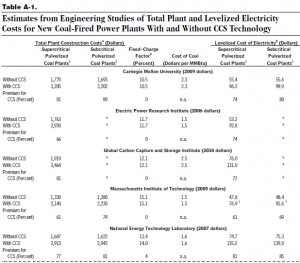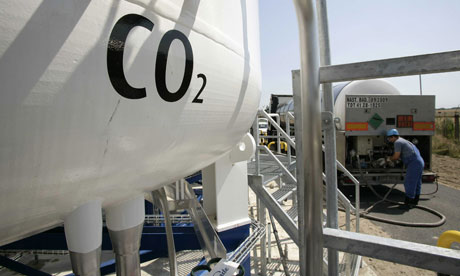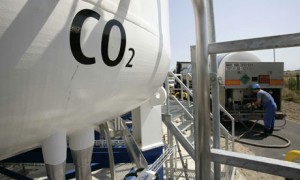Known as carbon capture and sequestration or CCS, it is the answer that “clean coal” patronizers seek. It is an answer for the carbon intensive oil sands. It is the only answer for coal-fired power plants if they are continue to exist.
By the beginning of 2014 many scientists are predicting that CO2 levels will rise to 400 parts per million. This will be the highest level of airborne carbon observed since the dawn of the Holocene. And the spike in CO2 will have come all in a very short window of time, the last 200 years.
But 400 is not where CO2 levels will stop based on current carbon output. World Energy Outlook in its 2013 projections expects current and forecasted levels of fossil fuel consumption to eventually cause CO2 emissions to reach 450 ppm by as early as 2035. How does that level of CO2 translate to overall atmospheric warming? The answer is a mean average increase of 2 Celsius (3.8 Fahrenheit) degrees. I must emphasize that this is an optimistic projection. There are other scenarios that point to more drastic outcomes. For example, if we continue current trends then energy usage globally will double with concomitant increases in CO2 and other greenhouse gases. The world would then see mean temperature rises of 6 Celsius (10 Fahrenheit). And if we were to see the results of agreements at Copenhagen and Rio de Janeiro come to fruition (post-Kyoto Protocol) then we might see global temperatures cap after rising 4 Celsius (7.2 Fahrenheit). Anyway you look at it what mean temperature rises means for polar regions will be far different if we are to go by what we have witnessed to date. Because the poles, more the Arctic then the Antarctic, have seen dramatic temperature increases since the 1980s while atmospheric Co2 levels have steadily climbed.
So getting back to the need for CCS it would seem logical that such technology be implemented to hold back the rise in atmospheric CO2. But so far CCS projects are turning out to be unattractive to industry and even government players. Witness the recent pulling of the plug on Canadian CCS projects for example. Why?
- Because CCS is expensive whether it is capturing exhaust from a coal or gas-fired power plant, or removing CO2 emissions as part of a process associated with the production of cement, fertilizer, steel or other products. This is true for new production facilities and even more costly if retrofitting existing plants. The table that follows (click on it to enlarge) from a 2011 Global CCS Institute study shows the significant increase in engineering costs for coal-fired power plants with and without CCS. The difference is dramatic.

- The cost of recovering CO2 from current and planned projects amounts to $38 to $107 per ton according to studies done by the Global CCS Institute referenced in point 1. Compare that to a progressive carbon tax as part of a cap and trade system, from $10 to $50 a ton and you can see why industry is reluctant to participate without massive government subsidies.
So are we kidding ourselves in attempting to implement CCS solutions? Probably.
Better ways to deal with rising CO2 levels are ones that we are already implementing:
- A switch from fossil fuels to renewable clean energy sources. This means first and foremost the ending of coal-fired energy production establishing a firm end date. Next on the list will be oil and then finally natural gas. Closing coal-fired power plants is being implemented in Ontario where the last plant is in the process of being shut down this year.
- Looking at new nuclear technology that produces less radioactive waste.
- A smarter grid to manage distribution of energy more effectively.
- Conservation, probably the most important of these four points. Because through developing more efficient transportation technology, better designed and retrofitted homes, and the same with industrial and commercial building sites, we will dramatically reduce consumption and slow down the growth of energy demand.











Give me the Amazon river watershed in the nation of Brazil, get out of my way, and I will photosynthetically permanently sequester all the atmospheric carbon presently emitted from coal-fired power plants for $15/ton. Any other approach will cost more, probably a lot more. As I have commented several times in the past, the basic problem is global overpopulation. If you refuse to confront that issue, all other schemes to abate atmospheric carbon are certain to fail. But you might have a lot of fun searching in vain for the lost keys under the street lamp.
Two fundamental problems with CCS designs for which there are estimated costs per ton are that
– they are engineering solutions, foremost; and,
– they can never be more efficient than 27%, since they bury, compress and sink, or pump through processed, quarried rock, twice as much oxygen as carbon.
The formula is C02. Two parts oxygen per part of carbon.
I confess to a personal fondness for oxygen. I suggest that:
Buried hydro-carbon chains
Plus
Free 02 oxygen gas
converted to
Buried Carbon-oxygen compounds,
and
Free H20 gas
is not a sustainable
A few years back, “Scientific American” ran a rather depressing article that summarized the fate of the Earth on geological time scales. Our home is becoming a red, rusting, planet. Free oxygen is binding with the mineral surface (rusting the crust). Free Hydrogen and Nitrogen are boiling into space. Sunlight splits atmospheric H20, the H2 catching the solar breeze toward Pluto. The Oxygen hangs around, finding heavier elements to bind to.
Carbon sequestration in cellulose: long carbon chains with a stingy sprinkling of hydrogen and even less oxygen, seems a more sustainable solution.
Plant forests on non-arable land, irrigated by solar-powered water distillation and pumping installations.
Back of an envelope calculations suggest that a solar panel array the size of the Dominican Republic could replace all the fossil fuel consumption of the world of today. Long term retention of lumber harvested from a brand new forest the size of two Cubas could offset the fossil carbon consumption of a growing world 20 years from now.
So, no, do not pressurize deep oil wells or pump C02 deep in the oceans, as a liquid or solid that you hope never “burps”. Instead, plant a tree, and then repeat millions of times. Plan for water distillation and pumping into continents to grow these forests and their timber, to be sequestered in housing.